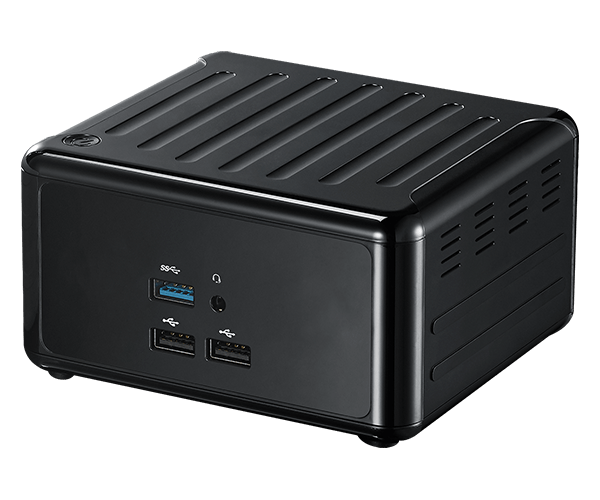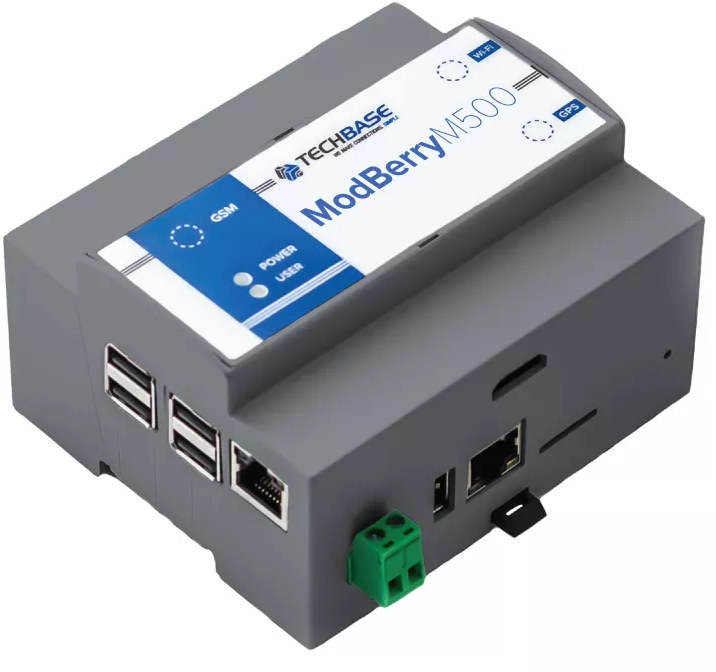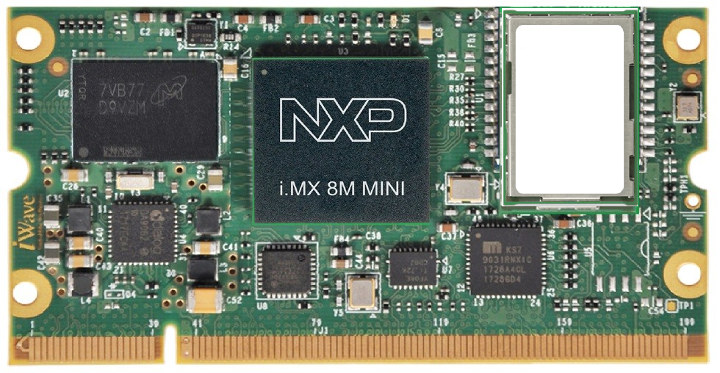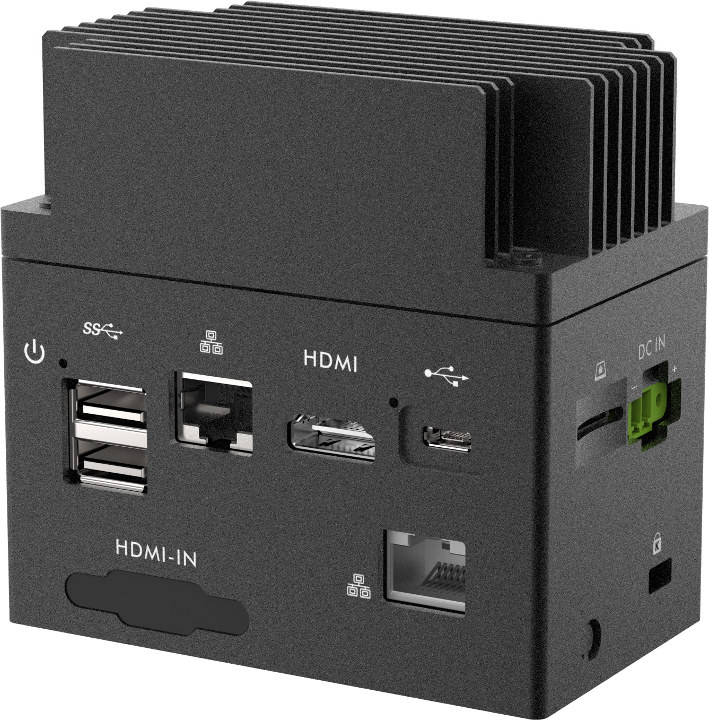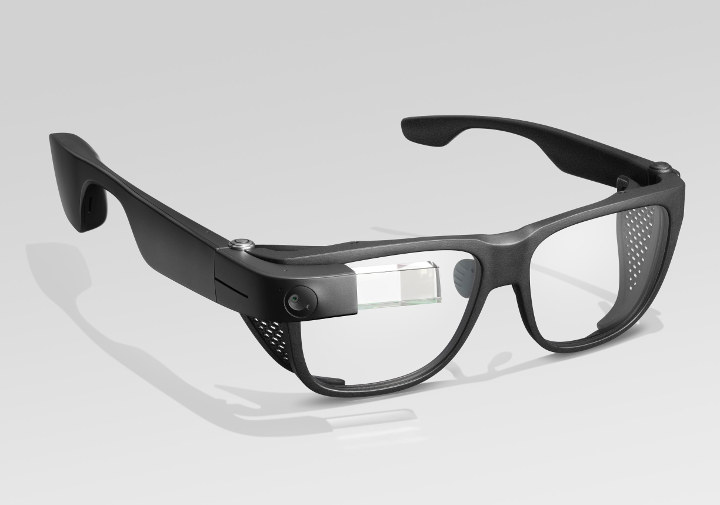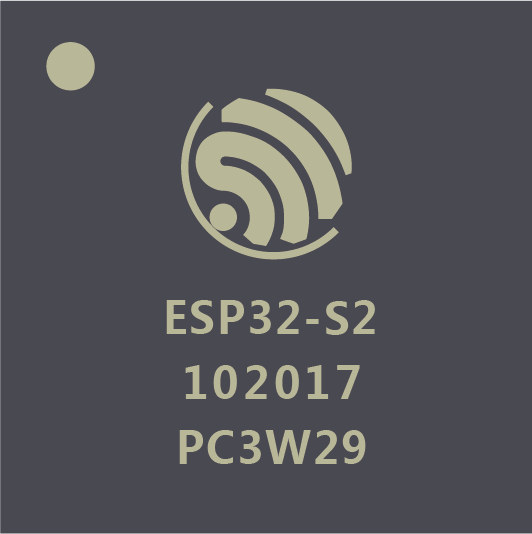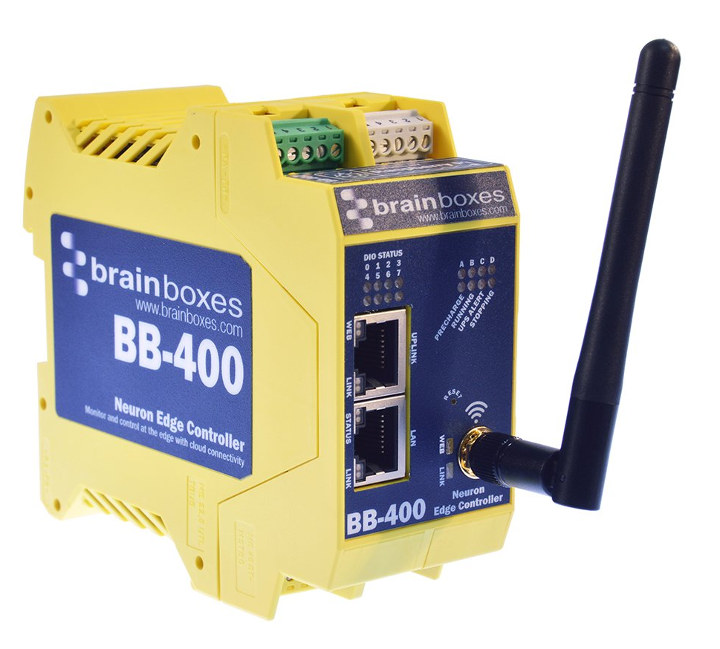The mini PC market has a new product from ASRock, a company, well known for its motherboards and Mini PCs. Following up on their iBOX-R1000 Ryzen Embedded R1000 mini PC, the ASRock 4×4 Box is now available with either the AMD Ryzen Embedded R1000 processor or the AMD Ryzen Embedded V1000 processor in a smaller form factor. Right now, the new mini PC targets the industrial sector, and not the consumer market. This addition to the industrial motherboards and rugged mini PCs line, the 4×4 Box R1000 and V1000 offers more features and are designed to fit in a smaller case, hence the 4×4 name which likely refers to the 4″x4″ dimensions of the motherboard. The AMD Ryzen Embedded is finding its way into all kinds of industrial and medical uses, because of its Radeon VEGA graphics capability and processing enhancements over the R or C series processors. The ASRock […]
ModBerry M500 Industrial Computer Gets Upgraded to Raspberry Pi 4
We first wrote about Modberry M500 industrial computer when it was upgraded from Raspberry Pi 3 to Raspberry Pi 3 B+, and added PoE support. With the launch of Raspberry Pi 4 model B, it should come as no surprise that Techbase has now announced Modberry M500 would be available with the latest board from the Raspberry Pi Foundation. Modberry M500 RPI 4 preliminary specifications: SoC – Broadcom BCM2711B0 quad-core Arm Cortex-A72 processor @ 1.5 GHz with VideoCore VI GPU System Memory – 1GB, 2GB or 4GB LPDDR4 Storage – 4GB eMMC flash (TBC), and/or 8GB micro SD card Video & Audio Output – HDMI 2.0 up to 4K @ 60Hz and 3.5mm jack for CVBS (composite + stereo audio) Connectivity True Gigabit Ethernet, up to 2x optional 10/100M Ethernet ports Dual band 802.11 b/g/n WiFi and Bluetooth 5.0 LE Optional Zigbee, LTE/3G, GPS, WiFi, and Bluetooth cards USB – […]
iWave Systems Unveils iW-RainboW-G34M-SM i.MX 8M Mini/Nano System-on-Module
NXP nomenclature for their i.MX 8M processors can be a little confusing. First discovered in 2016, the original i.MX 8M processor family comes with one to four Arm Cortex-A53 cores, a real-time Cortex M4 core, targets multimedia application with FullHD or 4K decoding/encoding support and is manufactured using a 28nm process. NXP then announced i.MX 8M Mini processor family in February 2018 with a 14-nm FinFET processor allowing a higher maximum CPU frequency of 2.0 GHz, less video output interfaces (no HDMI, nor DisplayPort), and optional Full HD video encoder and decoder, .e.g no 4K. Finally, earlier this year, the company unveiled NXP i.MX 8M Nano further power-optimized with the same 14nm manufacturing process, but a lower frequency of 1.5 GHz, and a Cortex-M7 core replacing the Cortex-M4 core found in previous i.MX 8M processors. This allows i.MX 8M Nano SoC to have a 2W TDP, and achieve sub-watt power […]
Shuttle EN01J is a Tiny Apollo Lake Mini PC Topped with a Large Heatsink
Many people don’t want heatsink, but in some case fanless designs do not allow for maximum sustained performance. This should not be a problem for Shuttle EN01J mini PC with a choice of 10W Apollo Lake processors, and a rugged design completed with a large heatsink topping the enclosure used to make sure the processor runs optimally for the target applications, which include digital signage, industrial automation, and visual recognition applications as reported by FanlessTech. Shuttle EN01J specifications: SoC (One or the other) – Intel Celeron J3355 dual core, Celeron J3455 quad core, or Pentium J4200 quad core processor with Intel HD graphic; 10W TDP System Memory – Up to 8GB LPDDR4 2,400 MHz Storage – Up to 64GB eMMC flash, microSD card slot Video Output – HDMI 1.4 up to 3840z2160 @ 30 Hz Connectivity – Gigabit Ethernet (Intel) with optional POE-PD or POE-PSE, nano SIM slot for M.2 […]
Google Glass Enterprise Edition v2 Features Snapdragon XR1 Processor
To be honest, I was pretty happy when it was clear that smart glasses for the consumer market would not take off, and I would be living in a better, smart glasses-free, world. But I also reckoned that those could have use in professional settings, and Google Glass Enterprise edition was first spotted in 2015 with an Atom processor. The company has now launched an upgraded model with Google Glass Enterprise Edition v2 powered by Qualcomm Snapdragon XR1 eXtended reality (XR) platform. Google Glass Enterprise Edition v2 specifications: SoC – Qualcomm Snapdragon XR1 quad-core Kryo processor @ 1.7GHz with Adreno GPU, Qualcomm AI Engine for on-device processing; 10nm manufacturing process System Memory – 3GB LPDDR4 Storage – 32GB eMMC flash storage Display – 640×360 Optical Display Module Audio out – Mono Speaker, USB audio, BT audio Microphones – 3 beam-forming microphones Camera – 8MP, 80 DFOV Connectivity – Wi-Fi 5 […]
Espressif ESP32-S2 Secure WiFi MCU Comes with an Xtensa LX7 Core @ 240 MHz
Espressif Systems has unveiled a new ESP32 WiFi MCU based on Cadence (previously Tensilica) Xtensa LX7 core instead of the usual Xtensa LX6 core(s). ESP32-S2 is powered by a single Xtensa LX7 core clocked at 240 MHz, supports Wi-Fi HT40 @ 2.4 GHz, and provides up to 43 GPIOs. Espressif ESP32-S2 specifications: CPU – Cadence Xtensa single-core 32-bit LX7 microcontroller @ up to 240 MHz, and ultra-low-power co-processor System Memory – 320 kB SRAM, external SPIRAM support up to 128 MB in total, 16 KB RTC memory Storage – 128 kB ROM, up to 1 GB of external flash support Connectivity Wi-Fi 802.11 b/g/n 1×1 transmit and receive with HT40 support with data rate up to 150 Mbps Support for TCP/IP networking, ESP-MESH networking, TLS 1.0, 1.1 and 1.2 and other networking protocols over Wi-Fi Support Time-of-Flight (TOF) measurements with normal Wi-Fi packets I/O & peripherals 43x programmable GPIOs 14x […]
Embedded Linux Conference & Open Source Summit 2019 Schedule
In the last few years, I covered the Embedded Linux Conference and IoT Summit schedules since both were happening at the same time and in the same location. But the Linux Foundation have recently announced the Embedded Linux Conference will combine with the Open Source Summit, so the IoT Summit appears to have been phased out. The full schedule for the events taking place on August 21 – 23, 2019 at the Hilton San Diego Bayfront, USA, has also been released, so I’ll create a virtual schedule with some of the sessions most relevant to this blog. Wednesday August 21, 2019 11:30 – 12:05 – What’s New with U-Boot? by Simon Glass, Google LLC U-Boot is a widely used bootloader in embedded systems. Many users are unaware of the wide feature-set of U-Boot, particularly features added in the last few years. This talk aims to bring users (and prospective users) […]
BB-400 Neuron Edge Dual Ethernet Industrial Controller Combines Raspberry Pi CM3+ and Arduino MCU
While the Raspberry Pi boards are mostly promoted as tools to teach STEM to kids and adults alike, they have found their way in a fair amount of industrial products, including ModBerry M500 industrial computer, Janz Tec emPC-A/RPI3 industrial embedded controller, and Kunbus RevolutionPi RevPi Core among others. There’s yet another option with Brainboxes BB-400 Neuron Edge industrial controller that was announced last year with Raspberry Pi Compute Module 3, but recently got an upgrade to Raspberry Pi Compute Module 3+. The controller features two Ethernet ports and also includes an Arduino compatible microcontroller to control the system’s eight configurable digital inputs and outputs. BB-400 Neuron Edge industrial controller specifications: SoM – Raspberry Pi Compute Module 3+ with Broadcom BCM2837B0 quad-core , Cortex-A53 processor @ 1.2GHz, 1 GB LPDDR2, 32GB eMMC Flash storage MCU – Unnamed Microchip Atmel Arduino compatible microcontroller Connectivity Ethernet Uplink Port – 1x RJ45 jack, 10/100Mbps […]


